CROSSEU Brings Alpine Flood Risks into Focus: A Case from Trentino
2025-10-01
The CROSSEU project’s findings from Case Study Area 4 (CSA#4), led by the University of Padova, highlight the socio-economic value of flood protection by combining physical and social sciences in a novel way. These results have been shared with researchers and policymakers to encourage evidence-based climate adaptation strategies. Notably, the study was presented through a poster at the 8th International Conference on Energy and Meteorology (ICEM 2025) with the title "Valuation of Social Benefits of Flood Adaptation in Northeast Italy: Evidence from a Choice Experiment", a key forum where experts in climate services, risk governance, and resilience gathered to discuss the potential of such integrated approaches in shaping future policies across Europe.
It showcased how integrating advanced climate and hydrological modelling with stated preference methods—a form of economic valuation that captures public preferences—can help quantify the social value of flood mitigation and adaptation strategies.
By quantifying the social benefits of reducing flood impacts across residential, productive, agricultural, and touristic sectors, the study provides actionable insights that can help guide effective flood risk management and policy decisions in Northeast Italy and beyond.
Photo 1. Trentino Alto Adige map and examples of flood impacts in the region
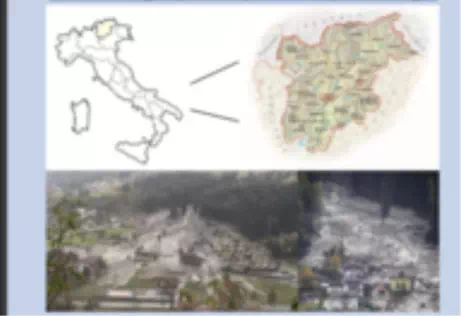
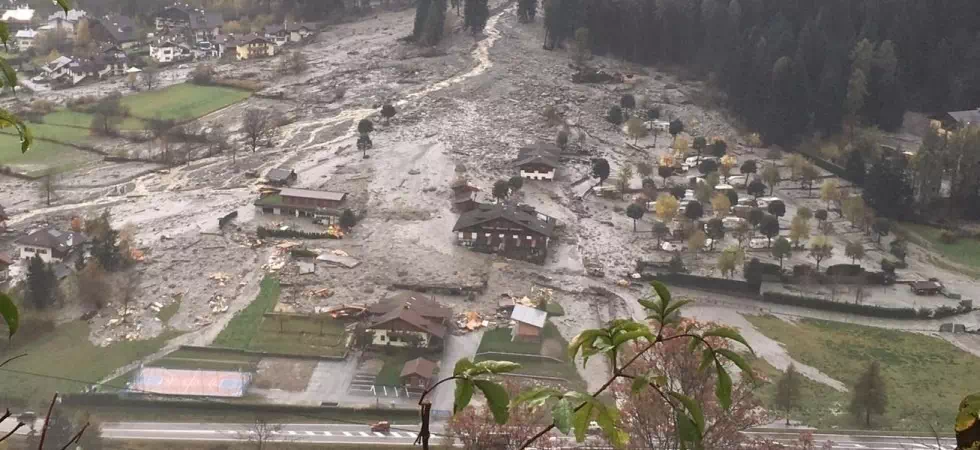
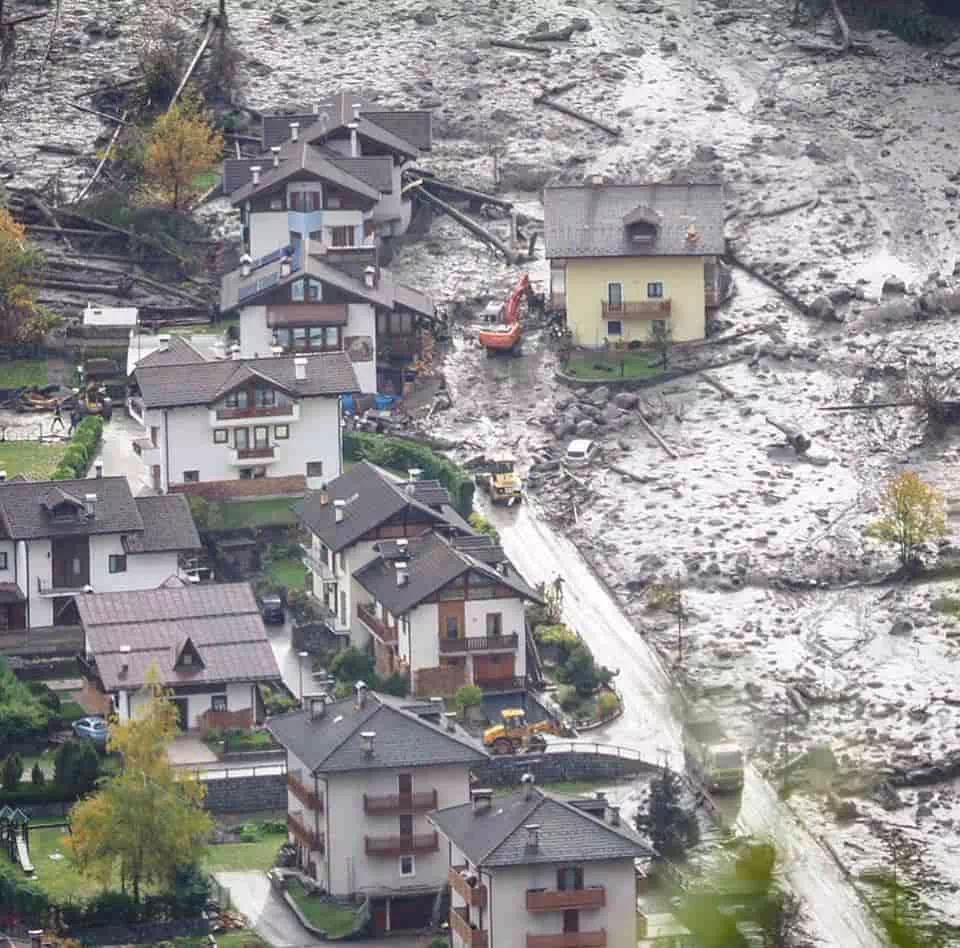
Why This Case Study Matters: Focus on a Climate Change Hotspot
The study focuses on a Climate Change Hotspot (CCH) in Trentino-Alto Adige, an Alpine region increasingly affected by intense short-duration rainfall and flash floods. Its complex terrain and fragile geology, including numerous alluvial fans (landforms prone to debris flows and flooding), make it especially vulnerable.
Figure 1: Map showing spatial distribution of alluvial fans in Trentino
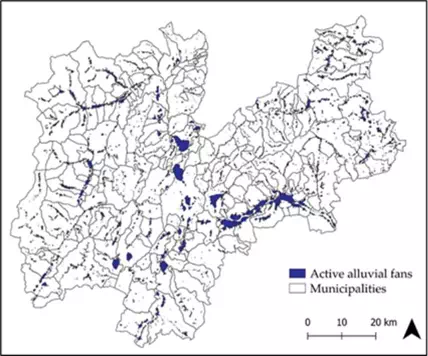
Similar flood risks are emerging in other Alpine and pre-Alpine regions—such as southern Germany, western Austria, and eastern France—where dense populations and critical infrastructure meet a changing climate.
Real-World Relevance: Learning from Storm Vaia
The study builds on the extreme weather event Storm Vaia (October 2018), which brought 200–500 mm of rain in 72 hours, causing flooding, landslides, and 11 fatalities in Northeast Italy.
This storyline grounds the research in a real-world disaster and helps assess what mitigation and adaptation (M&A) strategies could have reduced the impact.
Methodology in a Nutshell: Science Meets Society
To evaluate the socio-economic risks and impacts of extreme precipitation events in the CCH, a six-step methodological framework was applied as follows:
Step 1: Climate Scenarios
Future flood scenarios were created using climate projections from advanced regional models, focusing on three 10-year periods (1996–2005, 2041–2050, 2090–2099) under the RCP 8.5 scenario.
Step 2: Data Integration
Climate data were combined with socio-economic information at the regional level. Population and economic factors were assumed constant due to lack of future data.
Step 3: Impact Assessment
Hydrological models transformed precipitation into flood impacts across five domains: residential, productive, roads, agriculture, and tourism. Economic damage for each was estimated via a Choice Experiment survey.
Step 4: Flood Risk Estimation
Hazard and exposure data were merged to create flood risk indicators, linked to economic valuations of impact reduction by land use type.
Step 5: Social Cost Estimation
Average social costs of flood impacts were calculated for future scenarios by aggregating estimates for the regional population.
Step 6: Decision suppor
Adaptation strategies and related mitigation strategies are identified
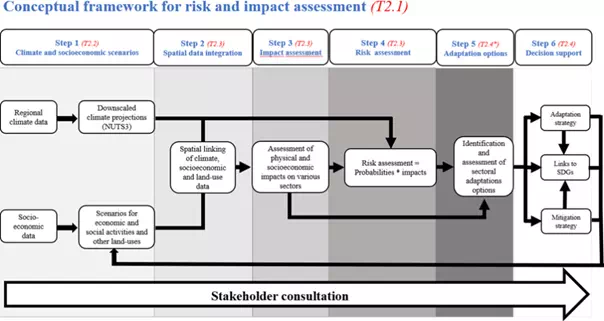
Key Findings: What the Public Values Most
The research showed a clear public preference for investing in flood adaptation—especially when it protects homes.
Estimated Flood Exposure by 2090–2099
Under the worst-case climate scenario, flooded areas could reach:
- Residential areas: up to 16% in mountains
- Agricultural land: up to 25% in mountains
- Roads: up to 21%
The Choice Experiment revealed that people are willing to pay annually to avoid flood impacts:
Figure 3. Average individual economic valuation for total flood impact by land use category.
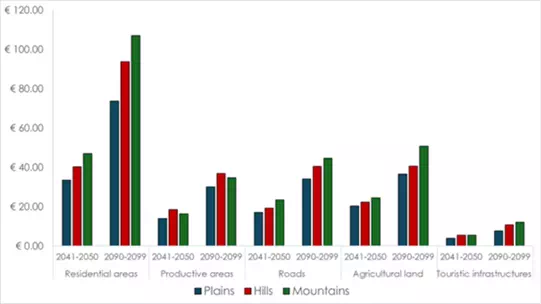
The highest concern is for residential areas, highlighting the importance of personal safety and home protection in public preferences. Productive areas and roads follow closely, underlining the economic and mobility risks tied to floods.
What’s Next?
Building on these findings, ongoing collaboration with the climate services community— including presentations at events like ICEM 2025—aims to strengthen ties between researchers and decision-makers. This engagement will help translate integrated flood risk valuations into effective climate adaptation policies that promote resilience and sustainability across Europe.
CSA#4 on Floods is part of the broader CROSSEU project, which delivers cross-sectoral climate risk assessments across European regions and hazards. The project supports policymakers in prioritizing adaptation investments by combining scientific evidence with public values.
To learn more about CROSSEU’s work on climate risk, energy, and social resilience, visit
the CROSSEU project website.
What to read next

CROSSEU Brings Alpine Flood Risks into Focus: A Case from Trentino
The CROSSEU project’s findings from Case Study Area 4 (CSA#4), led by the University of Padova, highlight the socio-economic value of flood protection by combining physical and social sciences in a novel way.

How will heatwaves shape Prague’s future
As part of the EU-funded CROSSEU project, which explores climate-related risks and societal responses across Europe. This CROSSEU case study area #1 (CSA#1) investigates how rising temperatures

Can we predict the future of snow avalanches in a warming world
s climate change accelerates, mountain communities across Europe face increasing risks from snow avalanches - sudden, localised hazards with potentially devastating impacts on lives